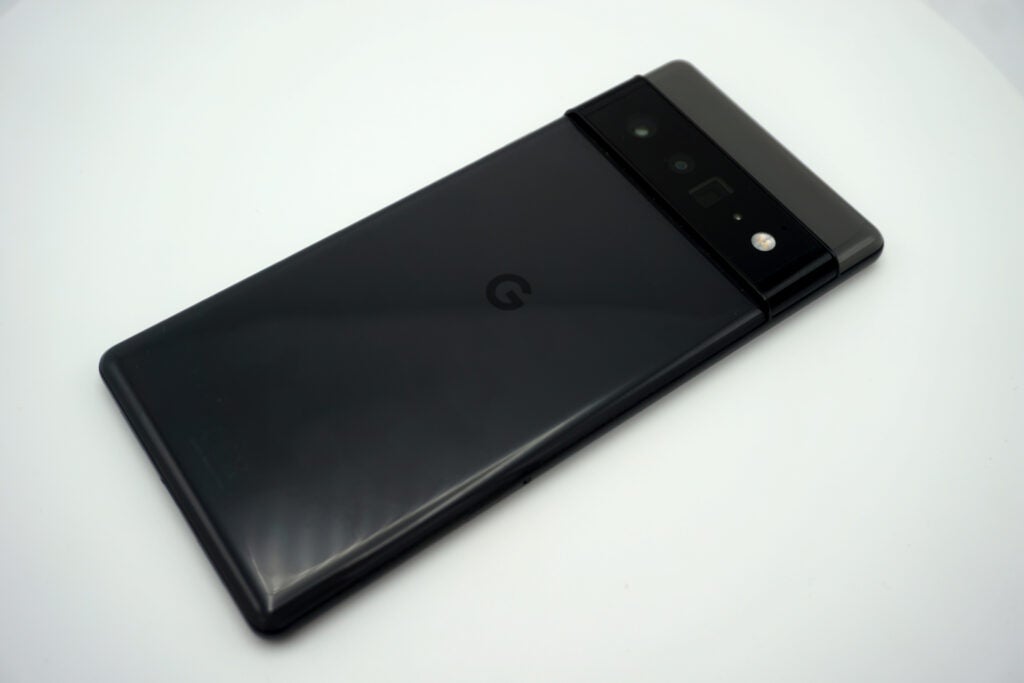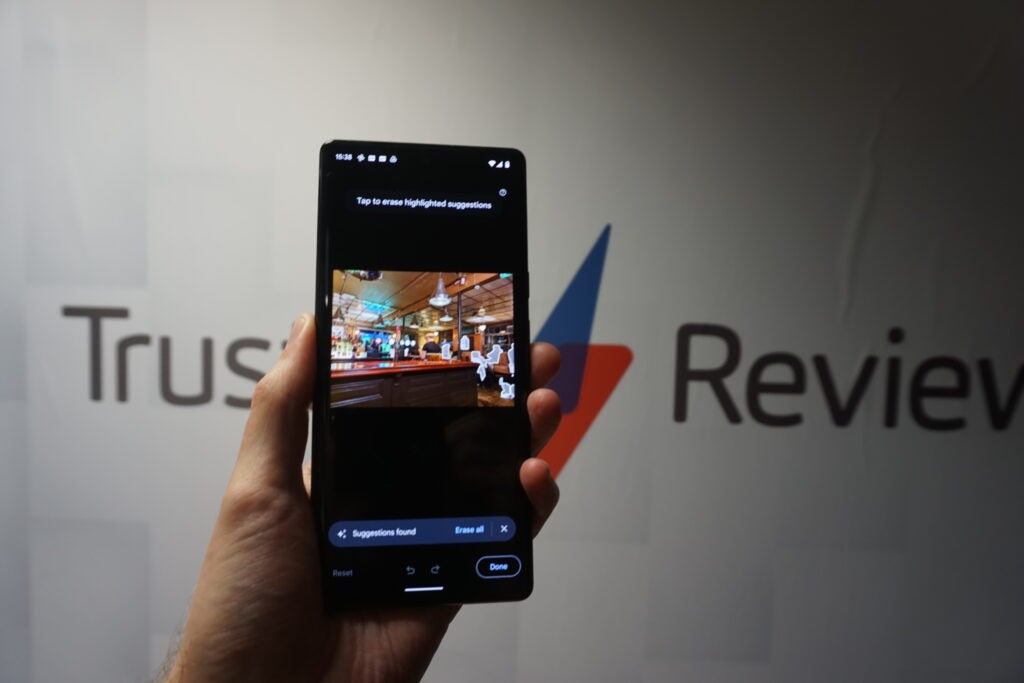Google’s Pixel 6 Pro launch undoubtedly set the standard for Pixel phones, as it was one of the first to feature the iconic camera bar and run on Google’s Tensor chip.
As it’s been almost three years since its launch, now might feel like the right time to upgrade. In fact, the Pixel 6 Pro is actually no longer available to buy directly from the Google store although it can often be found at other retailers, often at low prices.
If you’re considering making the splurge for the Pixel 9 Pro but want to know what’s really new, you’ve come to the right place. We’ve compared the specs of both and noted the key differences below to help you decide whether the time has finally come to upgrade.
The Google Pixel 9 Pro has an upgraded design
Alongside the Pixel 6, the Pixel 6 Pro was the first Pixel to feature Google’s rectangular camera bar. Found at the back of the handset, this camera bar divided opinion as it had a tendency to collect dust, would get caught in pockets and, after three Pixel series sported the design, it began to feel tired.
Fortunately the Pixel 9 Pro has been refreshed and sports a revamped camera bar, which is now a rounded, pill-shaped design that no longer stretches across either side of the phone.
The camera bar isn’t the only Pixel 9 Pro design refresh as it now also has flat edges, rounded corners and a silky glass finish that, unlike the Pixel 6 Pro, prevents pesky finger marks.
On the other hand, the Pixel 6 Pro offers more screen real estate, measuring 6.7-inches whereas the Pixel 9 Pro measures at just 6.3-inches. If you want the larger screen, you’ll want the Pixel 9 Pro XL.


The Google Pixel 9 Pro runs on the Tensor G4 chipset
Since the launch of its Tensor chip with the Pixel 6 series, Google has always prioritised AI functionality over sheer power and the new Tensor G4 processor is no exception.
All handsets in the Pixel 9 series will run on the new Google Tensor G4 chipset, which Google claims is its most efficient chip yet. Not only that but the processor was designed with Google DeepMind which means it is optimised to run advanced AI features such as Gemini Nano with Multimodality.
To further enable the smooth running of AI, the Pixel 9 Pro is fitted with 16GB of RAM while the Pixel 6 Pro comes with 12GB.
The Pixel 6 Pro runs on the original Google Tensor chip which, although isn’t quite as powerful as the Tensor G4, still enables the running of AI tools, including Magic Eraser which removes unwanted objects from your images and Unblur to sharpen faces. However, this chip misses out on more advanced features such as the inclusion of Gemini, Google’s voice assistant that’s built into the Pixel 9 Pro, and Pixel Screenshots, an app which organises your screenshots for easy searching.


The Google Pixel 9 Pro has a 48MP ultrawide lens
One of our favourite features of the Pixel series has been its impressive camera setup, which is able to capture detailed shots across most lighting conditions. Both the Pixel 6 Pro and Pixel 9 Pro have three rear cameras which include 50MP main and 48MP telephoto lenses.
Although both handsets do have an ultrawide lens, the Pixel 9 Pro boasts a higher resolution of 48MP compared to the 6 Pro’s 12MP. Even so, we found the ultrawide of the Pixel 6 Pro to be “very capable, offering a smooth shooting experience and generally great results.”
As we touched upon earlier, the cameras of both smartphones are supported by the inclusion of AI editing tools to help enhance your images. You’ll find favourites such as the aforementioned Magic Eraser and Portrait Light which uses machine learning to automatically adjust lighting when capturing photos.


The Pixel 9 Pro includes numerous other photo editing tools that aren’t found on the 6 Pro, such as Best Take which combines similar group shots into one image where everyone looks their best and Audio Magic Eraser which reduces unwanted sounds, such as wind and traffic, from videos.
The Google Pixel 9 Pro promises seven years of upgrades
Google promises the Pixel 9 Pro will see at least seven years of Android OS and Security upgrade which, according to Google’s website, should see the handset up to at least August 2031.
When the Pixel 6 Pro launched back in 2021, Google promised it would receive three years of Android OS upgrades, seeing the handset up to October 2024. This means that although it will receive the Android 15 update later this year, that may be the last OS upgrade it’s entitled to.
The Google Pixel 6 Pro has a bigger battery
Perhaps surprisingly so, the Pixel 6 Pro has a 5000mAh battery capacity whereas the Pixel 9 Pro has a smaller 4700mAh.
Both offer fast charging, with the Pixel 6 Pro compatible with up to 30W chargers and the Pixel 9 Pro supported by up to 45W, which Google explains will take the phone to 55% in just 30-minutes.
The Pixel 9 Pro is more expensive
Before we get into the specific pricing, it’s worth mentioning that the Pixel 6 Pro is no longer available to buy directly from the Google store however it can still be found across other major retailers.
Available for pre-order and ready to launch on September 4, the Pixel 9 Pro has a starting RRP of £999/$999 for the 128GB sized handset. The Pixel 6 Pro’s original RRP was £849/$899 upon its launch, however as an older smartphone, we have seen this price drop to around the £300 mark depending on the retailer.
Verdict
If you’re still sporting a Pixel 6 Pro then we’d recommend making the jump to the new Pixel 9 Pro. Not only does the Pixel 9 Pro boast a faster Google Tensor chipset but it also includes plenty of new AI-powered tools that the Pixel 6 Pro misses out on, from photo editing features to Circle to Search and Pixel Screenshots.
Not only that but the Pixel 9 Pro has an upgraded camera setup, thanks to its brand new 48MP ultrawide and promises to be a significant improvement from the, already capable, Pixel 6 Pro’s trio of lenses.
Features aside, the upcoming Android 15 update will be the final one that the Pixel 6 Pro will be entitled to, which means the handset won’t be supported afterwards. To ensure you’re supported for longer, the Pixel 9 Pro is a more long-lasting investment as Google says it will see at least seven years of Android OS updates.




